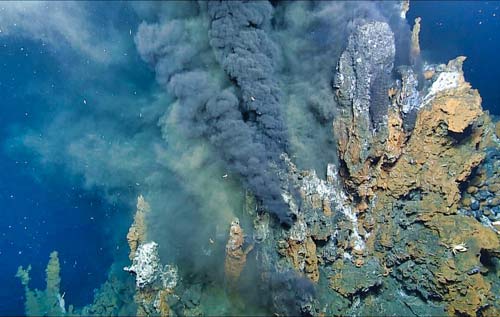hydrothermal vent

A hydrothermal vent is an opening in the ocean floor out of which hot, mineral-rich water erupts. Following the discovery of a plethora of new species, including many previously-unknown types of microbial extremophiles in the vicinity black smokers, deep-sea vents have been touted as sites where the origin of life may have taken place (see life, origin of), not only this world but elsewhere, including possibly Mars and Europa.1 To test this theory, Koichiro Matsuno and colleagues at the University of Tokyo built an artificial vent in which water is heated to between 110°C and 350°C in one chamber, pressurized to 200 atmospheres, and cooled to near-freezing in another. The water then returns to the heating chamber, in the same way that sea-water cycles through the circulation system of a natural vent. The Japanese researchers added glycine, the simplest amino acid, to the system and found later that peptides had formed. When they added copper, a trace element commonly found in the water from natural vents, they observed that the peptides grew still longer.2
References
1. Bock, G., Goode, J. A., and Walker, M., eds. Evolution of Hydrothermal
Ecosystems on Earth (and Mars?), Ciba Foundation Symposium, No.
202. New York: John Wiley & Sons (1996).
2. Imai, E., Honda, H., Hatori, K., Brack, A., and Koichiro, M. "Elongation
of Oligopeptides in a Simulated Submarine Hydrothermal System," Science, 283, 831 (1999).


